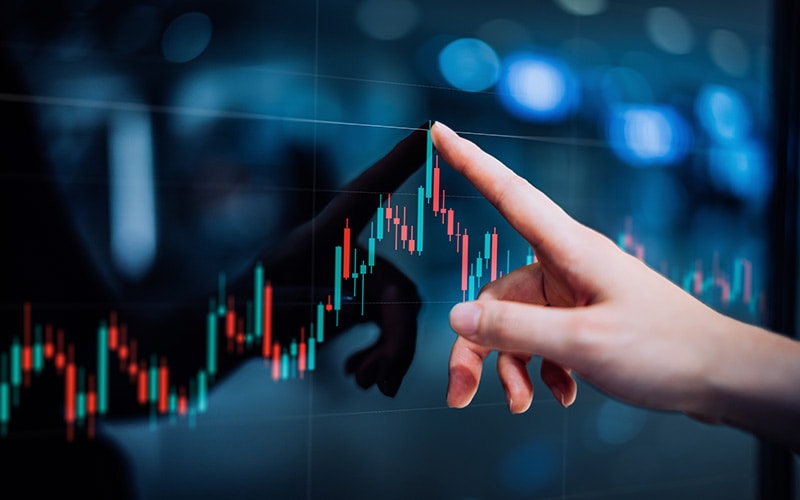Insights
- Connected digital platforms have expanded access to trading data.
- In spite of energy trading’s fast pace, data interpretation takes time, and operating friction persists.
- Global developments have newly relevant local impacts in energy trading.
- AI-driven power demand is driving energy markets in new ways.
- AI implementations must start with a focus on business value and data readiness.

Unleashing a New Energy: The Infosys-MRE Fusion
David Wagner (Infosys Consulting), Tommy Miles (MRE Consulting), and Sriram Sundar (Infosys) explore how AI is transforming the energy industry. Learn how the Infosys SURE AI framework—featuring asset.ai, insights.ai, and persona.ai—is driving asset optimization, operational efficiency, and smarter decision-making.
Executive summary
Global energy businesses understand the value of energy trading desks. And smart trading desks recognize that the stability, risk management and pricing advantages they deliver face new challenges. Heightened volatility, growing volumes of data, operational friction, and extrinsic events mean trading desks need new tools to deliver value.
Artificial intelligence (AI) can help trading desks meet these new challenges. Traders can use AI for acting on market opportunities, optimizing risk management, and capturing margin in a high-stakes environment that is increasingly unstable. This paper explores how AI can be leveraged to measure and respond to change in energy markets with continuous analysis and action — a time horizon that was previously not manageable.
Geopolitical events and global structural shifts have made market signals and physical events more frequent and less predictable. Tight waterways, abrupt policy moves, cyber incidents, and grid reliability concerns can all re-route flows and re-price risk.
To be sure, the physical commodity trading markets have always been affected by these types of events. Even the increasing frequency of events is not unprecedented. However, the global energy consumption market’s ability to shift rapidly has introduced a globalization of previously uncorrelated markets.
AI has become a major driver for energy demand globally and has correlated markets such as the US and Asia power markets that previously functioned in isolation. Here, correlation means traders in US energy markets must account for AI-driven changes in power demand in Asia. In an AI-driven demand market, only an AI-supported energy trading desk can survive.
A flood of information
Connected digital platforms for trading and risk management have expanded access to data, but they haven’t removed the real bottleneck: interpreting unstructured, time-sensitive signals.
These platforms and emerging technologies are generating more data than trading organizations can realistically analyze in real time. Commodity and energy trading and risk management systems track positions, risk, and settlements, while enterprise resource planning platforms manage contracts and logistics, and customer relationship management systems add customer and counterparty context. On top of this, smarter pipeline systems now stream internet of things (IoT) monitoring data, robotic inspections, and AI-driven leak detection and risk response. The result is a flood of information from every corner of the business, creating both unprecedented opportunities for insight and a challenge in turning raw data into actionable decisions.
Trading desks need to analyze updates they receive to decide what matters to today’s deals, nominations, and exposures. This information is sent via emails, PDFs, independent system operator postings, and operator bulletins, and needs to be assessed under intense time pressure.
The hard part is turning fragmented signals into decisions at market speed. Alerts arrive out of sequence and in inconsistent formats, crossing team lines and blurring accountability. What’s missing is a reliable, repeatable way to triage and prioritize signals with shared context.
The need to separate noise from signal
Energy trading has changed. It’s not the data acquisition that is the chief limiter of performance – it’s identifying signal amid the noise.
Signals of new demand have evolved. Regional growth is still a signal that would alter forward positions and supply needs. But today so are changes in load driven by industrial restarts, data centers, and shifts in the adoption of electric vehicles (EVs).
Market signals or physical market disruptions can come in the form of pipeline notices, outages, repairs, weather alerts, accidents and new load. Any of these items can be timely operational signals.
However, teams face a flood of mixed-quality inputs: scheduled maintenance, emergent pipeline repairs, compressor trips, port congestions, weather alerts, tariff or rule changes, and customer messages about shifting demand. These arrive in assorted formats and often require manual triage before action.
In addition to data volume and format chaos, several other factors add to the operating friction energy traders face:
- Timing disorder: Alerts landing late, duplicative, or out of sequence, obscuring what is current
- Context gap: Mapping events to books, location, contracts, and obligations is manual
- Cross-team handoffs: Trading, scheduling, and risk share accountability without shared triage
- Variability: Periods of quiet, punctuated by bursts when markets move the fastest
Manually triaging a torrent of inputs under these conditions slows alert-to-action, increases inconsistent decisions across teams, creates risk blind spots, and missed optimization.

The new global-local signal
Layer on geopolitical volatility and infrastructure stress, and both the frequency and impact of signals and disruptions become less predictable.
For example, the United States, China and other regions are racing to build more AI-focused data centers, which drives new demand for electricity. This rapid buildout is causing energy markets that were previously uncorrelated to now be correlated. Energy traders in the US must account for electricity demand shifts in Malayasia and China in setting their bids for power generated in the US.
This sort of new correlation reshapes oil and gas supply flows and moves global price benchmarks that ripple into US and European markets. The takeaway isn’t about China; it’s that capacity and demand realities set the stage for how everyday market signals play out and impact daily decisions for energy trading.
In the face of these challenges and shifts, it is essential for trading desks to study how AI separates noise from signal in order to parse data and make prudent trading decisions.
AI is the bridge between global signals and local decisions. AI has the capability to transform the speed and scale of analysis of notices, postings, feeds, foreign policy updates, and more. AI can synthesize millions of points of data at scale, which would not be possible with current manual monitoring; separate noise from valuable signals, and surface specific patterns and takeaways supporting, for example, recognizing a pipeline pressure drop before an official announcement. By determining supply disruption, logistics constraints, and demand changes and connecting them to how they impact books, there is better situational awareness and more consistent, confident decisions across the desk, improving opportunity and risk management.
Clear and practical AI for energy trading
AI’s value in energy trading is clear and practical: reading the stream, deciding what matters, and proposing action. Energy data feeds and trading signals are accelerating and growing more complex. AI can operate at the scale and tempo of today’s feeds. It fuses market, operational, and customer data into a single view so that events are evaluated in the context of a particular trading book, such as a particular commodity, market segment, or strategy.
Because models learn from outcomes, precision improves with use – desk experience gets codified, and the system elevates the signals that historically moved exposure. Rather than aiming first at broad global extrapolation, the highest return deployments focus on operational signals where ground truth exists, and actions are clear.
Start where feedback loops are short, so trust builds quickly. The payoff is tangible: faster signal-to-decision cycles, fewer preventable misses, and a steadier risk posture when volatility spikes.
Start with business value
AI is a competitive differentiator. The first step to using AI in energy trading is about focus, not technology. Identify the agents or use cases that would bring the most measurable impact, whether that’s faster decision-making in volatile markets, smarter forecasting, or more efficient logistics. By starting with value, you ensure that AI is solving the right problems, not just adding noise.
Check data and technology readiness
AI is only as good as the data feeding it. If your trading, logistics, or risk data isn’t accurate, complete, and accessible, there’s no solid foundation to build on. Assess your systems, integrations, and governance to see if your organization is ready. Without strong data pipelines and the right technology stack, AI initiatives will stall before they start.
Quantify what matters
Establish performance benchmarks from day one and report on them consistently. Energy executives and the trading desk must align and buy in to what matters, but here are five relevant benchmarks:
- Latency reduction: minutes from alert receipt to response
- Operational efficiency: manual hours saved per week
- Margin protection: Profit-and-loss uplift and hedging cost savings during disruptions
- Risk accuracy: Fewer back-test breaches (where actual trading losses exceed the predicted risk level) or improved limit utilization (where a trader or trading book reaches maximum allowed risk limits)
- Contract fulfillment: Fewer delivery failures or nomination misses, where an actual delivery of a commodity differs from time or volume of scheduled contract.
Experiment, learn, and improve
AI in trading isn’t a one-and-done project. Success comes from testing quickly, learning from failures, and continuously refining models and workflows. Teams that embrace a culture of experimentation and ongoing improvement will be best positioned to capture long-term advantage as AI capabilities advance. Define clear success criteria and pivot quickly if value isn’t materializing. Success is faster alert-to-decision and fewer missed opportunities, not model novelty. Treat your AI as living assets. Retrain using outcome data from disruptions, forecasts, and executed playbooks so precision improves with continued use. Static models decay; feedback-driven models compound value.
Leading desks use it to accelerate timelines, compress routine work, and create a durable advantage. The real impact comes when AI is embedded in day-to-day workflows – nearly invisible – sharpening judgement, speeding response, and reducing cognitive load.
Use cases
Here are some examples of how AI and AI agents could be applied to energy trading.
AI can enable better responses to unexpected events. In the face of an unexpected pipeline disruption, an AI agent can monitor operator notices and map an event to specific meters, paths, contracts and regional trading books. This helps a trader evaluate volume and duration at risk. AI systems can go further and propose mitigation such as re-routes, alternate deliveries or protective hedges. In the face of storms, freezes and flooding, an AI agent can process information from weather agencies with traffic updates from maritime, rail and other sources to predict delays and bottlenecks. The agent can then explore alternatives and quickly recommend strategies to protect margins during disruptions.
In the context of new demand and changes in risk profiles, AI systems with good integration to the trading desk can give traders early alerts and information to act on. Step-changes in load, such as data center expansions, industrial restarts, or regional growth, often surface through permits, interconnection queues, news, and CRM activity before they show up in consumption data. The agent detects these signals early, estimates ramp profiles and duration, and quantifies incremental demand by location. It recommends procurement, storage, and hedging adjustments to rebalance supply before constraints bite, while flagging contract opportunities for origination. Feedback from realized load refines detection thresholds and improves future lead time.
Risk profiles can shift within minutes during market or operational events. The agent continuously recomputes exposure and, where applicable, recalibrates value-at-risk with real-time market data and event triggers from commodity trading and risk management systems or external feeds. The agent flags emerging breaches early, simulates candidate mitigations (hedges, position trims, collateral optimization), and explains the drivers so risk and trading can decide confidently. The AI captures outcomes to strengthen back-tests and reduce false positives over time.
Finally, regulatory compliance consumes significant desk resources and invites errors under time pressure. AI agents can help energy trading desk meet requirements from regulators and officials including the Federal Energy Regulatory Commission (FERC), the Commodity Futures Trading Commission (CFTC)and independent system operator (ISO). The agent parses new filings, tariff updates, and rule changes. The agent then maps them to active deals, nominations, and contracts, surfacing the required actions and documentation. The agent produces consistent records and audit trails while notifying owners when attestations or scheduled changes are due. The result is less manual effort, fewer gaps, and better audit readiness without slowing commercial activity.
Suggested AI implementation pattern and use cases
To make this concrete, we recommend a reusable implementation pattern, followed by applied use cases. The pattern shows common building blocks any desk can adopt and scale; the use cases translate those blocks into day-to-day workflows without tying the approach to a single commodity or region.
Implementation pattern
Ingest and normalize: Continuously pull operator notices, alerts from system operators, weather feeds, logistics updates, and internal systems data. Apply document understanding to emails, PDFs, and data transmissions such as EDI messages to extract entities (assets, locations, counterparties, contracts, dates).
Classify and contextualize: Assign events to disruption categories (unpredictable vs. new demand, planned vs. unplanned) and link them to current deals, positions, nominations, and contractual obligations.
Gauge the risk: Estimate exposure at risk (volumes, locations, durations), affected customers and counterparties, and potential knock-on effects such as changes in basis moves (pricing differences between local markets and benchmark hub prices) or capacity constraints.
Rank responses: Rank operational and trading responses by effectiveness and time-to-execute. These responses can include re-nominations (changes in time/location/volume of energy delivery by a shipper or trader), alternate routings, hedges, inventory repositioning, proactive customer-messaging.
Maintain human-in-the-loop and study feedback: Captures outcomes, retrain models, and continuously tighten alert-to-action latency. This keeps the system grounded in real desk behavior and avoids speculative global trend overreach.
Conclusion
The day-to-day work of a trading desk is intense. Bringing AI into that work has grown essential and requires the equivalent intensity to get right. Energy businesses should look to partners with commodity expertise, integration capability, and AI delivery experience for guidance. This starts with a working session to confirm scope and hypotheses. Experienced advisors can quickly translate that into a roadmap, timeline and AI investment case. This will help teams rapidly move from fragmented alerts to decisive action – with metrics that stakeholders can trust.





